-

Santa Fe U.S. Courthouse (1889)
Restored in 2002, The impressive 1889 U.S. Courthouse stands two blocks north of the Palace of the Governors, Santa Fe’s historic municipal core.
-
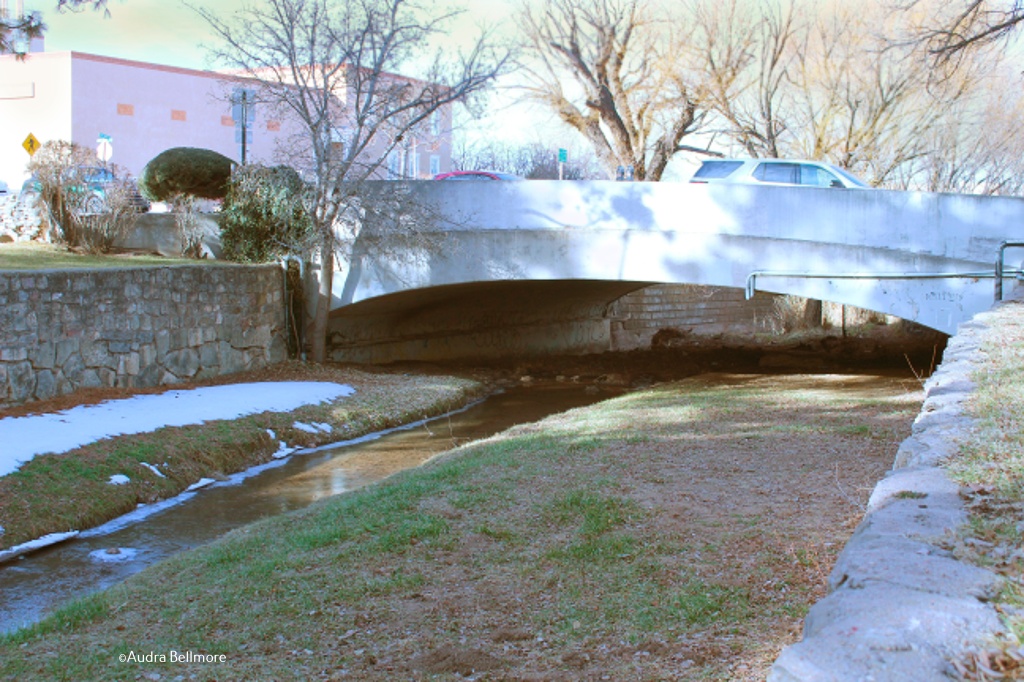
Santa Fe’s Don Gaspar Bridge (1934)
Santa Fe’s expansion south of the Santa Fe River was made possible by the construction of the Don Gaspar Bridge during the New Deal era in 1934.
-
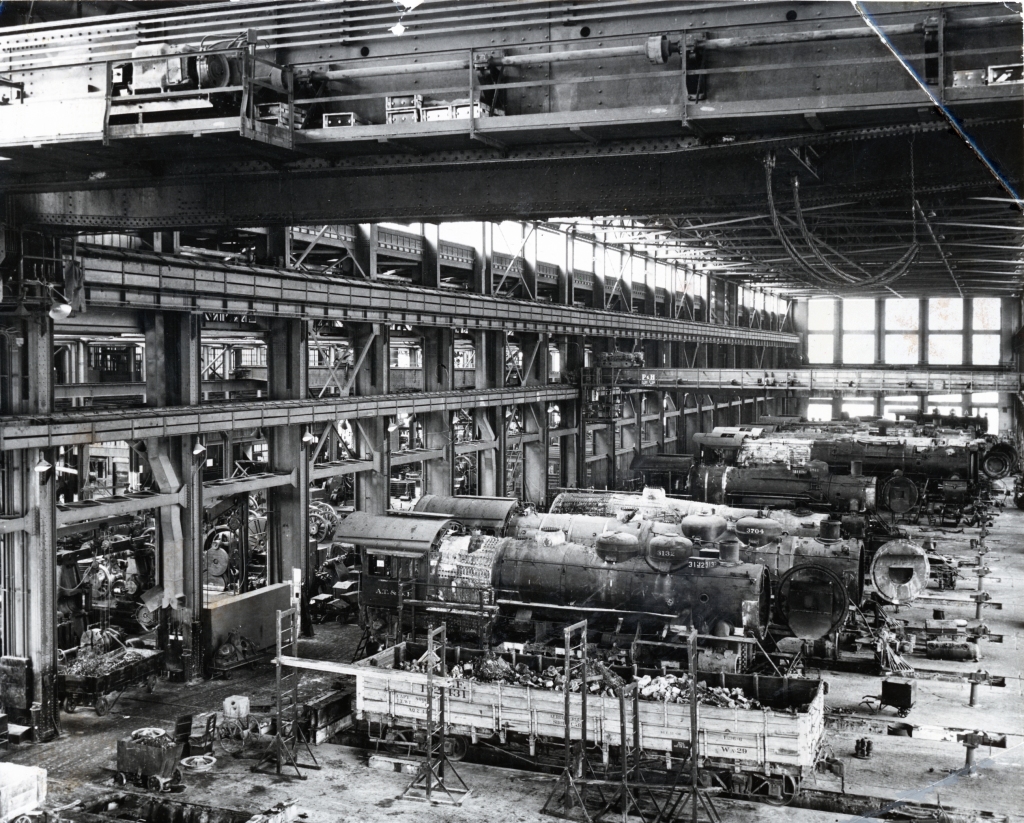
Atchison, Topeka, & Santa Fe Railway Locomotive Shops
The railroad came to Albuquerque in 1880, and by 1930 had transformed the farming village into a commercial center. By 1919, the Atchison, Topeka, & Santa Fe Rail Yards employed one quarter of the city’s work force, and were viewed with pride as signs of progress and prosperity.
-
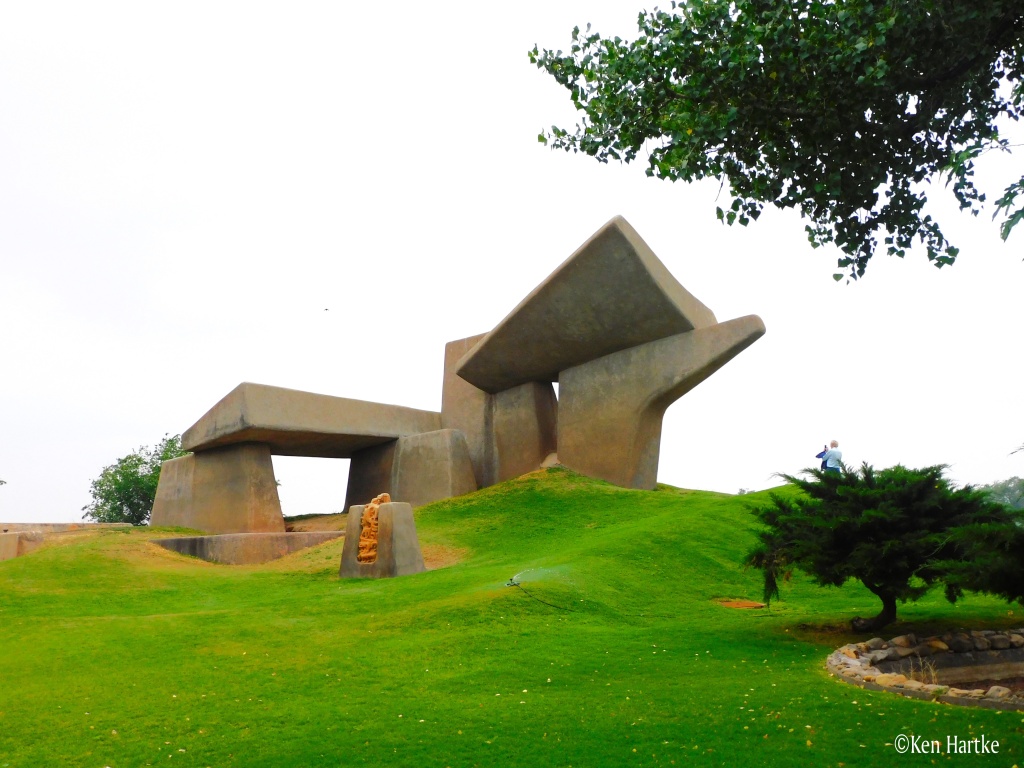
The Henge
The Henge, near Roswell, New Mexico is a modern monumental sculpture reminiscent of the ancient dolmen and standing stone henges found in the countryside in Ireland, Wales, England, and parts of Europe.
-

Chaco Culture National Historic Park
Chaco Culture National Historical Park is a UNESCO World Heritage Site located in Northwest New Mexico. The earliest Great Houses were begun in the mid-800s AD, and all were abandoned by 1250 AD. Chaco is the most extensive pre-European architectural site north of Mexico.
-

Spaceport America “Gateway to Space” Hangar Facility
Spaceport America, located 30 miles southeast of Truth or Consequences in the Jornada del Muerto desert, is the first commercial spaceport built in the world.
-

The Crosby Theatre at the Santa Fe Opera
The Crosby Theatre, performance venue for the Santa Fe Opera, is an open-air theatre with a unique roof structure. Another unique feature is that sunsets and summer storms can be viewed through the opening in the rear of the stage.
-

Murray Hotel
At five stories, the Murray Hotel was the tallest building in town, and reflected the growth spurt experienced by Silver City as it recovered from the Great Depression.
-

New Mexico’s Earliest Architecture
Sometime between 1 AD and 500 AD, early New Mexicans shifted from subsisting exclusively by hunting-gathering, to a seasonal mix of hunting-gathering and agriculture. Gradually, agriculture became the major strategy. New Mexicans became farmers and began to build more permanent homes and villages: New Mexico’s first architecture.
-

Mesa Public Library
The architecture of Mesa Public Library is composed of two major elements: a long, wedge-shaped volume pointing north, and a segment of a circle that emphasizes the panorama of the Jemez Mountains.
-

White Rock Visitor Center
The White Rock Visitor Center provides a gateway to near by national monuments and preserves. The building uses materials that recall natural bluffs and mountain cabins.
-

Santa Fe Art Institute
The Santa Fe Art Institute, designed by Legorreta and Legorreta Arquitectos, is one of the most colorful buildings in all of Santa Fe. It is an outstanding example of Mexican Minimalism architecture.
-

UNM Central Campus
The University of New Mexico was founded in 1889 when New Mexico was still a territory of the United States. The architectural development of the central campus balances a regional, Southwestern design identity with 130 years of architectural design evolution.
-
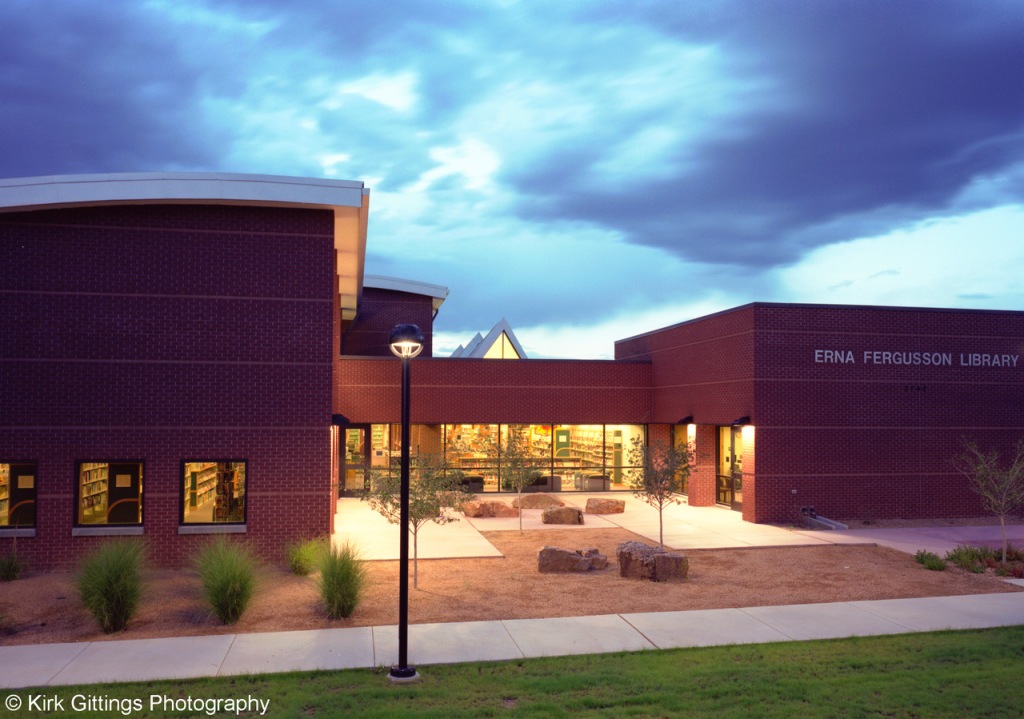
Erna Fergusson Library
Erna Fergusson Library is composed of three types of volumes: a low rectangular box; high, half-arched volumes; and a tower. Each of these shapes has a different form and function.
-
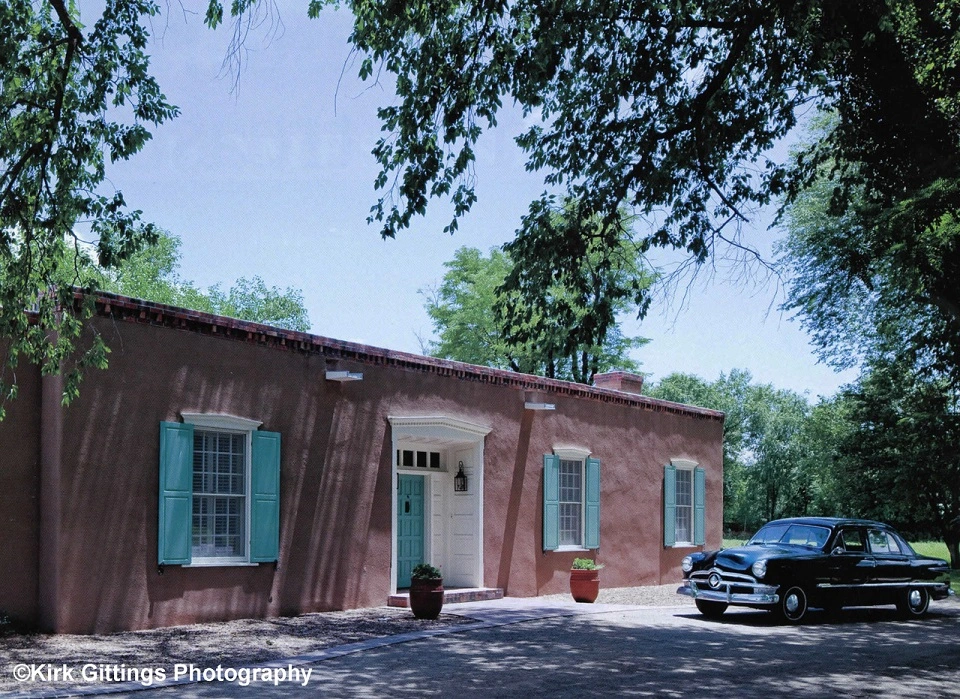
Kelly Residence
This house, built in 1937, was designed by John Gaw Meem, one of New Mexico’s most well-known architects of the early 20th century. It is a good example of Meem’s Territorial Revival style residences.
-

Salinas Pueblo Missions National Monument
The three sites of this National Monument have been occupied for centuries along a trade route from the Rio Grande Valley to the Plains of New Mexico. They also have the remains of some of the oldest Spanish Mission Churches in the United States.
-
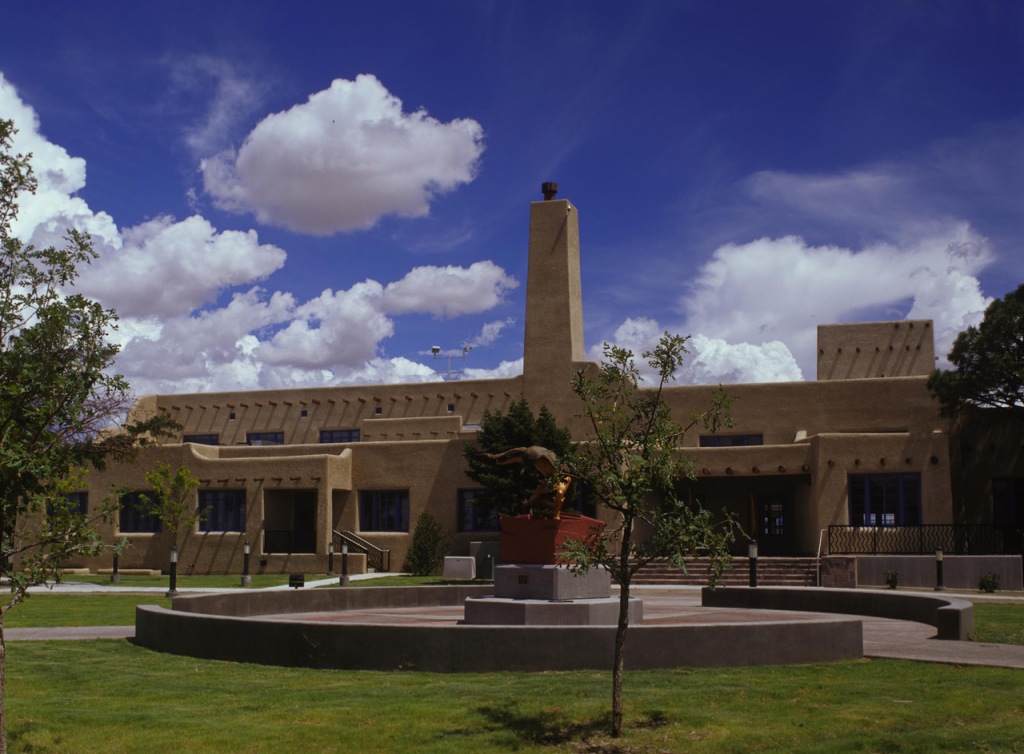
Old Albuquerque Municipal Airport Building
The Old Albuquerque Municipal Airport building was an important stop in the early transcontinental flights between Chicago and Los Angeles. It was the only major airport in the nation built in the Spanish Pueblo Revival style.
-
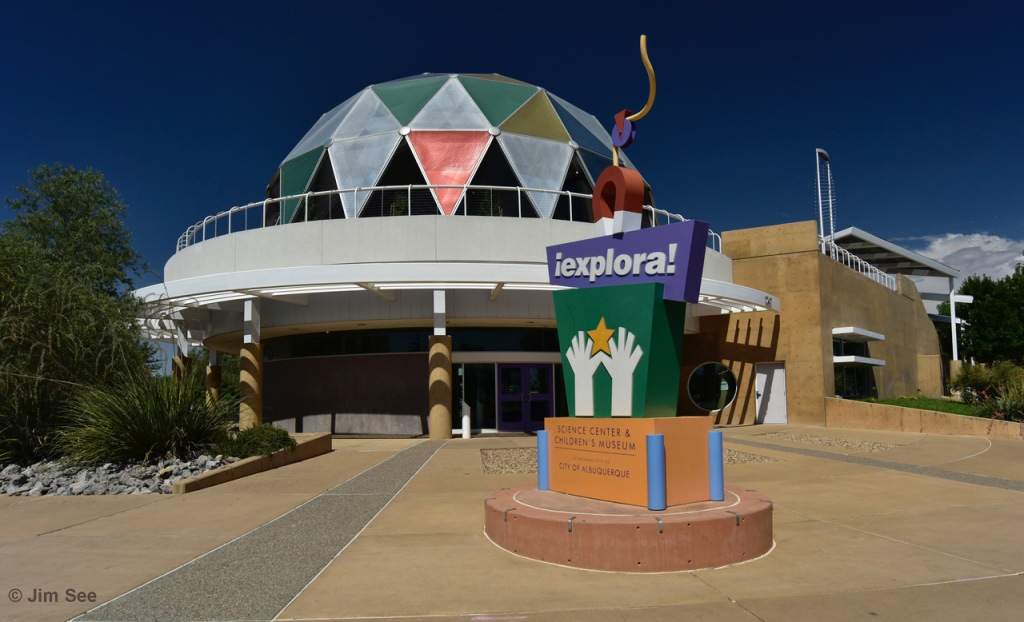
¡Explora! Science Center & Children’s Museum
The architecture of ¡Explora! is colorful and playful. It beckons children of all ages to come in and have fun learning.
-

KiMo Theater
In the age of elaborate film palaces, the KiMo Theater fused the symbolism of Native American cultures with the exotic qualities of the Art Deco style to produce what New Mexicans call Pueblo Deco.
-

Borowski Residence
The Borowski Residence design emphasizes home, hearth, and light. A simple palate of materials and careful detailing are used to execute three levels of space in an unusual way.
-

Vietnam Veterans Memorial
On a hill at the edge of the Moreno Valley in northern New Mexico, two curved, white planes soar toward the sky. Where the surfaces almost meet is the Peace and Brotherhood Chapel, the major feature of the Vietnam Veterans Memorial.
-

UNM Dreamstyle Arena (“The Pit”)
The University of New Mexico’s basketball arena is known nationally for the atmosphere created by the sunken court. The noise level created at a game generated the name, “The Pit.” However, the most interesting architectural aspect of “The Pit” is the way it was built.
-
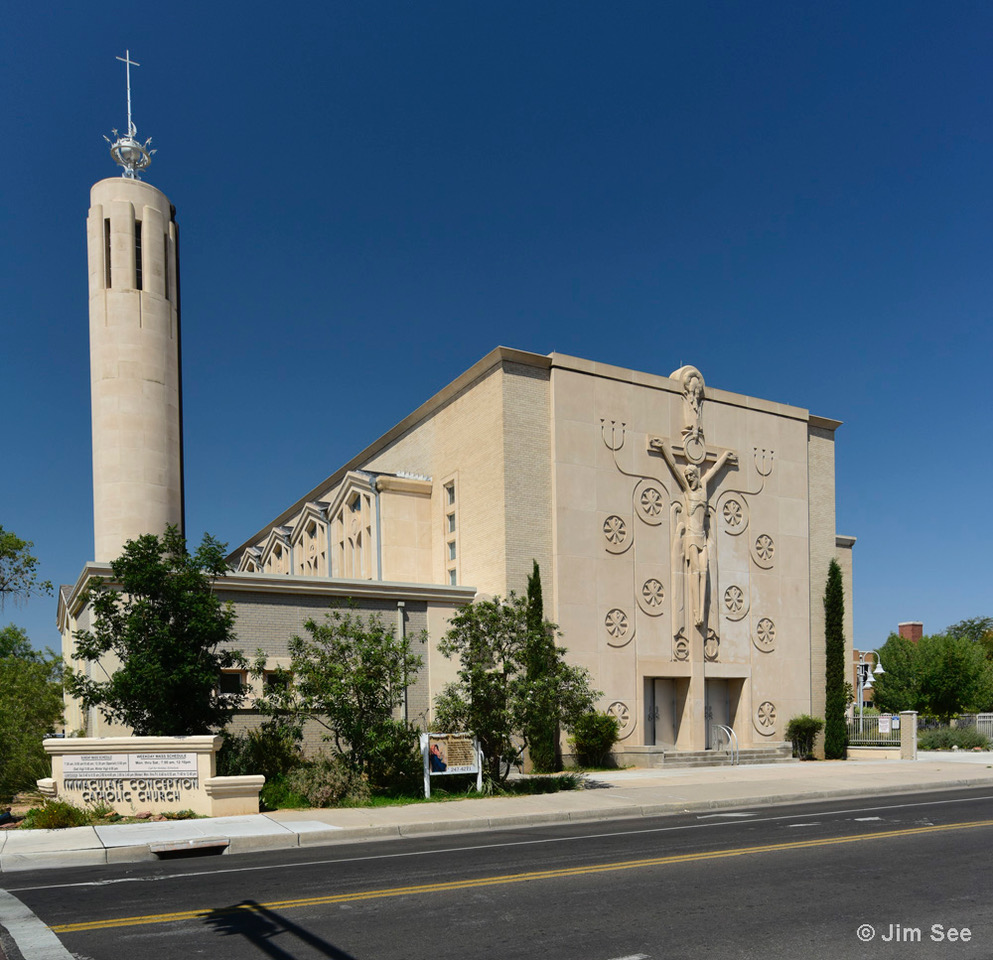
Immaculate Conception Catholic Church
The tower of the Immaculate Conception Church is an orienting landmark in Downtown Albuquerque. The major features of the building are on the inside: the stained glass windows and the altarpiece.
-

Roosevelt Park
Roosevelt Park is one of the Southwest’s best examples of New Deal Landscaping. Originally a sandy, garbage-strewn arroyo, the park design drew from English landscape imagery.
-
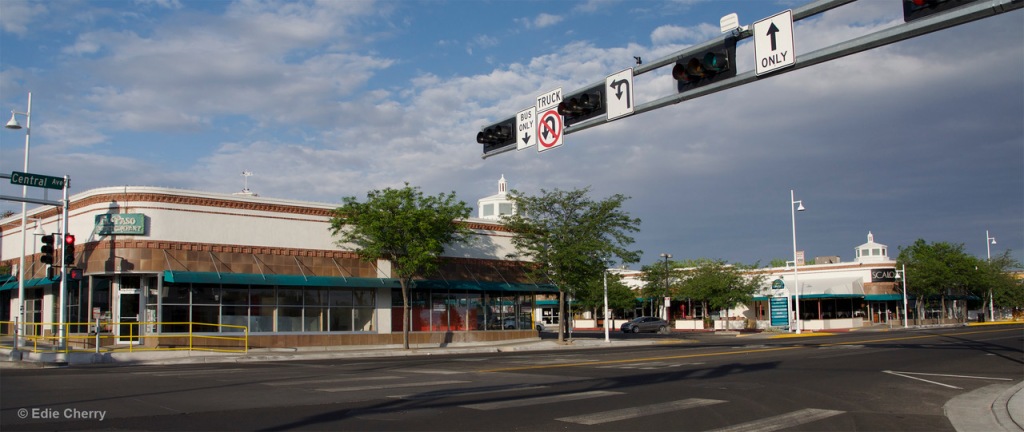
Nob Hill District
The Nob Hill District was Albuquerque’s first suburban shopping area based on the automobile. Central Avenue, a part of historic Route 66, is the backbone of this district. Catering to the 1930s residential area that developed east of UNM, the Nob Hill commercial area fostered a wide range of architectural styles.
-
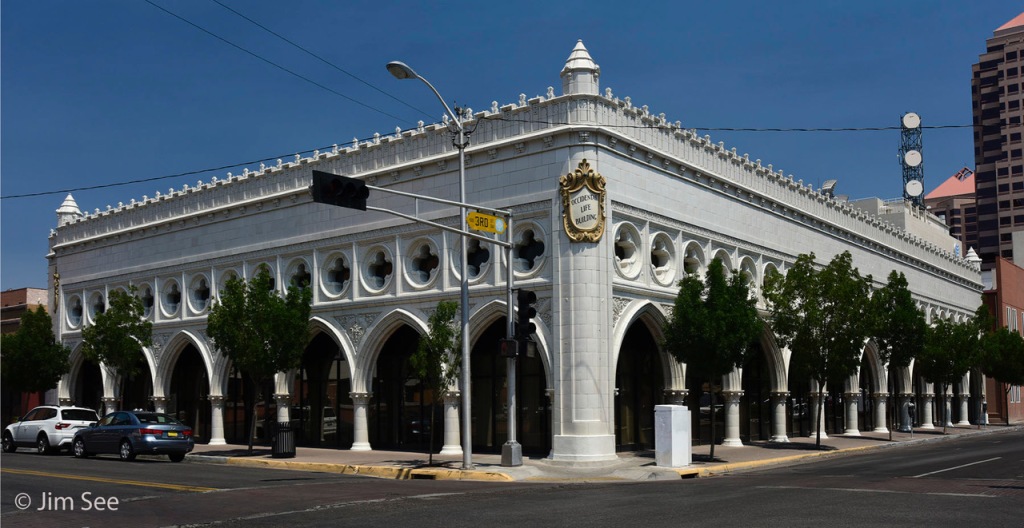
Occidental Life Building
The most well known, and perhaps the only, Venetian Gothic Revival building in New Mexico, the Occidental Life Building brings Venice to Albuquerque.
-

Atrisco Heritage Academy High School
The architecture of Atrisco Heritage Academy High School is as bold and proud as were the original settlers of the Atrisco Land Grant given by King Philip II of Spain to colonists in 1598.
-

Central & Unser – Patrick J. Baca Library
This handsome public building provides an important cultural focus for the developing West Side of Albuquerque.
-

The Lodge Resort & Spa
The Lodge Resort in Cloudcroft is one of the oldest resort hotels in New Mexico and has been in operation almost continuously since 1911.
-

City of Rocks State Park Visitor Center
The City of Rocks State Park’s Visitor Center enhances the natural resource without competing with it. The dramatic rock façade is camouflaged to match the landscape.
-

Spencer Theater for the Performing Arts
The Spencer Theater for the Performing Arts appears to be more a geological find than a piece of architecture.
-

George I. Sánchez Collaborative Community School
An innovative educational program, its architectural form, unscheduled collaboration spaces, and its colorful facades distinguish this school’s design.
-

U.S. Historic Courthouse
This 1930 courthouse was the first one built in Albuquerque that acknowledged a southwest architectural heritage by using earth-toned exterior materials and artistic details taken from Native American motifs.
-

Albuquerque Museum
The Albuquerque Museum has served as a major attraction for the city since it outgrew its first home, at the Sunport, becoming more dynamic over the years . . .
-

Manzano Mesa Multigenerational Center
Designed to accommodate a wide variety of uses—from fitness to art classes and more—for citizens of all ages, Manzano Mesa was the first such facility . . .
-

Isotopes Park
Isotopes Park is a near 100% replacement of the original Albuquerque Dukes stadium (Albuquerque Sports Stadium) on this site. . . .
-

Del Norte High School (revitalization) and Nex+Gen Academy
The intersection of Montgomery and San Mateo Boulevards is one of the busiest in Albuquerque. . . .
-

Pete V. Domenici U.S. Courthouse and McClellan Park
The Pete V. Domenici U.S. Courthouse, a major public building in Albuquerque, employs time-honored Southwestern architectural traditions . . .
-

Bart Prince Residence and Studio Gallery
This architect’s unusual residence and separate studio gallery is unique in Albuquerque. The visual complexity of the residence’s unique series of volumes. . . .
-

“Big I” Interchange Landscape
The “Big I,” the interchange of I-25 and I-40, located in the center of Albuquerque, is greatly enhanced by one of the largest landscape projects in the state, over 100 acres….
-

Botanic Garden (ABQ BioPark)
The ABQ BioPark’s Botanic Garden opened in 1996; the site, shared with the facility’s Aquarium, fills 32 acres along the Rio Grande….
-

Open Space Visitor Center (City of Albuquerque)
Albuquerque’s Open Space Visitor Center introduces visitors to the Rio Grande Bosque, nature-related art, a native-plant demonstration garden, agricultural fields, the Piedras Marcadas Pueblo archaeological site, and stunning views….
-

Main Library (Albuquerque Public Library)
George Pearl, FAIA, the designer of Albuquerque Public Library’s current Main Library, was a leader in the effort to find a modern architecture that spoke of the special qualities of the Southwest, what we now call “Regional Modernism.”…
-

Park Square
Park Square is considered one of Albuquerque’s purest examples of Modernism in a commercial high-rise. The building exhibits many Modernist design principles: expressed structure, a minimal palette of materials, consistency of façade design on a grid, and well-studied proportions….
-

El Vado Auto Court
One of the best examples of a pre-WWII tourist court on Route 66, El Vado Auto Court was built in 1937 in anticipation of the rerouting of the historic road . . .
-

Old Albuquerque High School
The Old Albuquerque High School complex dates to 1914. Its Gothic Revival style appearance—dark red brick, white trim, peaked pediments, and grouped windows—was the choice of many educational institutions across the country in the early 1900s. . . .
-

St. Paul Lutheran Church
Unique among the city’s churches for its triangular design, St. Paul Lutheran Church overlooks Albuquerque’s downtown from the edge of the East Mesa. . . .
-

Hotel Andaluz (Hilton)
Hotel magnate Conrad Hilton was a native of San Antonio, New Mexico. Owner of several hotels in Texas, Hilton made this his first after the Great Depression and the first modern, high-rise hotel in the state….
-

Berthold Spitz Residence
This Prairie-style home marked the beginning of a new century….
-

Simms Building
The Simms Building was the first International Style, high-rise building in New Mexico. It was representative of the post–World War II coming-of-age of Albuquerque as a modern city. . . .
-

First Plaza Galleria
Designed by famous Chicago architect, Harry Weese, in a “u” shape, this building at the eastern edge of downtown Albuquerque opens its plaza to a view of the Sandia Mountains. . . .
-

Huning Highlands Historic District
The Huning Highlands subdivision, Albuquerque’s first suburb, is located roughly between Broadway on the west, I-25 on the east, Iron on the south, and Martin Luther King on the north. The subdivision was established in 1880 . . .
-

National Hispanic Cultural Center (District)
The National Hispanic Cultural Center (NHCC) is dedicated to the preservation, promotion, and advancement of Hispanic culture, arts, and humanities. The campus is composed of five buildings and a number of landscape features. The new buildings and landscapes are contemporary interpretations of a variety of styles related to the U.S. Southwest, Latin America, and the Iberian Peninsula. . . .
-

Gutiérrez-Hubbell House
El Camino Real de Tierra Adentro (the Royal Road) stretched approximately 1600 miles from Mexico City to Ohkay Owingeh Pueblo, just north of Santa Fe, and was the most important trade route in the region in the 1600s and 1700s. . . .
-

Rio Grande Nature Center and Preserve
The Rio Grande Valley is a major migratory bird flyway and the Albuquerque Bosque is part of one of the longest Cottonwood forests in the world. As architect Antoine Predock has said of this site, “The building can be thought of as a permanent viewing blind set up with controlled apertures offering specific views of the wildlife in its natural habitat.” . .…
-

La Luz
This residential complex is situated on a sloping plane with breathtaking views of the Rio Grande Bosque and Sandia Mountains. . . .
-

Los Poblanos Historic Inn
Los Poblanos is considered one of architect John Gaw Meem’s residential masterpieces. . . .
-

First National Bank
At 141′ high with nine stories, the First National Bank was Albuquerque’s first skyscraper. In 1917, James Madison Raynolds became president of the bank and hired Trost & Trost to design the new bank building. . . .
